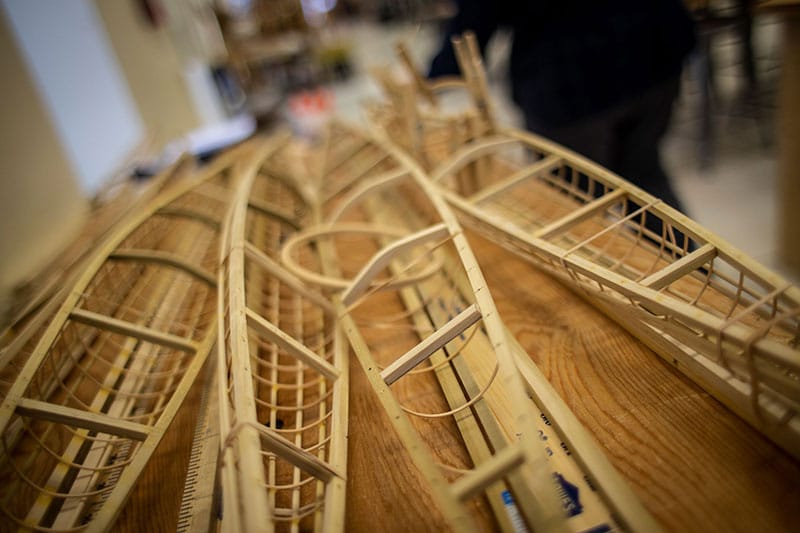 Typically, Indigenous Kayak Design students gather in the art studio to carve and assemble their own model kayaks. This year, Adjunct Instructor Andrew Abyo had to mail kits across the country instead.
Typically, Indigenous Kayak Design students gather in the art studio to carve and assemble their own model kayaks. This year, Adjunct Instructor Andrew Abyo had to mail kits across the country instead.
For January Block, Andrew taught from the Atwood Center art studio like always, while his students logged in from Anchorage, Kodiak, Florida, Texas, Wisconsin, and Washington. That opportunity to share Aleut and Alutiiq culture and craft with a wider audience has been “an unexpected benefit,” he said. “I teach both Native and non-Native students and it’s great to see the appreciation and thirst for knowledge in the culture.”
This is Andrew’s fourth year teaching Indigenous Kayak Design at APU, but he’s hosted workshops for years across Alaska. He carves visors, masks, and paddles, but says kayaks are his primary interest. That, and teaching.
“One of my passions is to teach and pass onto others who want to learn,” he said.
Andrew’s students create 1:6 models of bifurcated kayaks. His students gain an appreciation for the ingenuity and efficiency of the split-bow boats, which were developed by the Unangan and Sugpiaq peoples and which modern mathematicians have struggled to improve upon, he said.
The finished models are 40 inches long, though Andrew says the course is “a good stepping stone if someone chooses to build traditional kayaks.” It’s how he first learned the craft that has become his career.
Read more and watch an interview with Andrew from Alaska’s New Source.

